Stephen Romano Gallery
Devils Reign Exhibition: Stephen Romano Gallery
Boris Martinov
Many cultures hold a belief in evil as an entity. In Medieval Europe one such worldview reached catastrophic consequences when the ruling class developed the idea of the devil into a tool to control the population, wage relentless warfare and to colonize foreign territory. History paints a grim picture of a society where authority figures could shut down foreign influences, ignore social issues and suppress dissent simply by labeling them as works of the devil. In modern society we largely reject the idea of the devil but we often exhibit a reactionary impulse to externalize our problems into an us versus them mentality. Perhaps by taking a moment to explore the themes that society incorporates into the negative of the devil, an individual can gain a glimpse into some of the concepts that influence their own worldview.
“Fear, guilt, anxiety – keywords in the vocabulary of 20th century man. How do you banish these dark images from the soul? Some do it through art.” Through the month of April Stephen Romano gallery is hosting the “Devil’s Reign” – an art exhibit depicting the Devil. It is curated by Magus Peter H. Gilmore, High Priest of the Church of Satan. Founded by Anton LaVey in 1966 the Church of Satan is an atheistic religion with a humanistic worldview that rejects God or the Devil. Instead it advocates indulgence in man’s carnal desires and takes its name from the Christian concept of Satan. From the Satanic Bible – “The semantic meaning of Satan is the “adversary” or “opposition” or the “accuser”… Satan represents opposition to all religions which serve to frustrate and condemn man for his natural instincts. He has been given an evil role simply because he represents the carnal, earthly, and mundane aspects of life.”
Curiously, the Baphomet figure so commonly associated with Satanists is of Occult origin, not Christian. The most recognizable modern depiction of the Baphomet was done by Eliphas Levi and is an image rich with alchemical symbolism. It depicts an entity of balance that unifies opposing forces – the male and female (having breasts and a phallus), the earthly and the divine (hoofs and wings) and most notably the hands, one pointing up to a white moon and the other down to a black moon. According to the author it is used to expresses the perfect harmony of mercy with justice. The hands themselves are inscribed with the Latin words SOLVE (separate) and COAGULA (join together) – likely a part of an alchemical maxim which states that something must be broken down before it can be built up.
Portraying the devil is a daring endeavor not just for the uncomfortable associations it still evokes but also for the vastly varied cultural constructs that influence this concept. For example the Old Testament’s image of Satan is quite far from the commonly understood one – it describes a spirit being of angelic light, full of wisdom and perfect in beauty. The devil figure popular today receives its attributes largely from pagan Gods that the Christian church was looking to condemn. Most obviously the devil gets his horns and hoofs from Pan, the Greek god of nature and the wilderness. Conveniently he was also associated with people’s sexual impulses which the church wanted to suppress. In the pagan worldview these impulses were not ostracized but nevertheless regarded with both fear and fascination for their compulsive nature.
Another pagan influence on the image of the devil could be that of the ruler of the underworld. Many European pagan pantheons featured a diety that ruled over an Underworld where the souls of the dead are sent. Although a scary and unhospitable place, the Underworld in most pagan traditions was not directly comparable to Hell, for example the dead were not really tortured for their mortal sins, they simply dwelled there. The pagan gods of the Underworld were often feared but at the same time revered with equal respect as the rest of the pantheon and were even named the patrons of certain crafts. The cthonic universe of the Underworld remains a popular theme with many artists and writers to this day. Some like H. P. Lovecraft have managed to create a fictional universe of strange otherworldly monsters that continues to inspire other authors who perpetuate and evolve it.
Given the Christian concept of Hell the prevalence of themes of violence and dominance associated with the devil doesn’t come as a surprise. The devil is a very common symbol with people engaged in a lifestyle of crime. It is also very well represented in the horror scene and among people fascinated by the macabre.
In folk tales and popular culture the devil usually takes the role of a stranger seeking to trick the common people he meets. One common theme in such stories is of the protagonist making a deal with the devil to obtain a skill or a fortune in exchange for his soul. Almost all of these tales end up tragically for the protagonist who can not handle their new found gift. Another theme in folklore features the devil in the form of a seductive stranger looking to tempt the main character into a sexual act often for the purpose of conceiving a demonic offspring and perpetuating evil’s reign on earth.

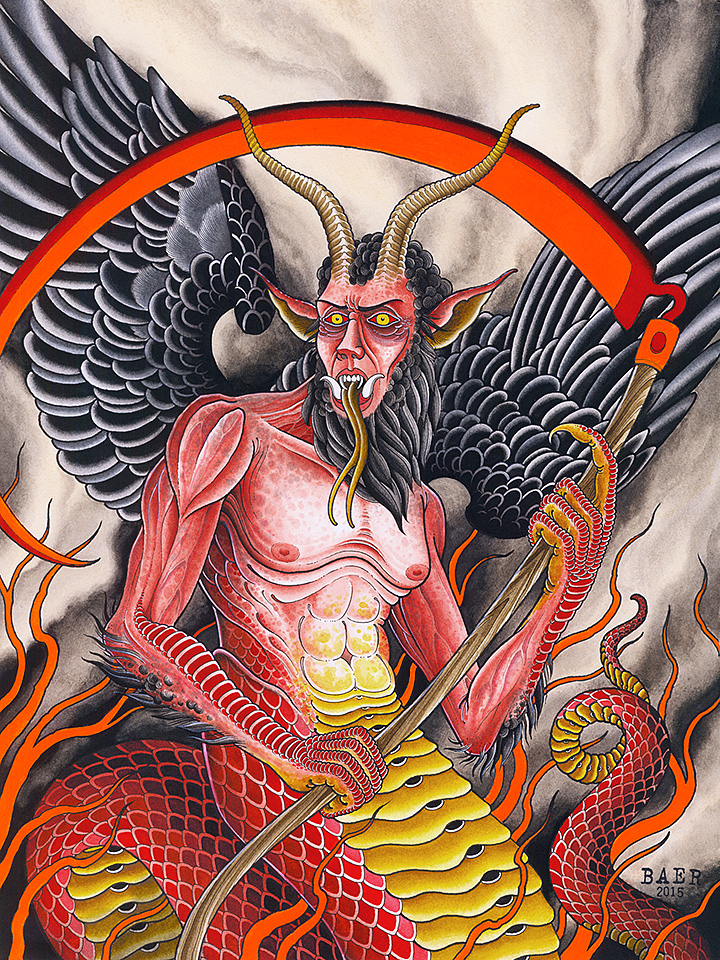
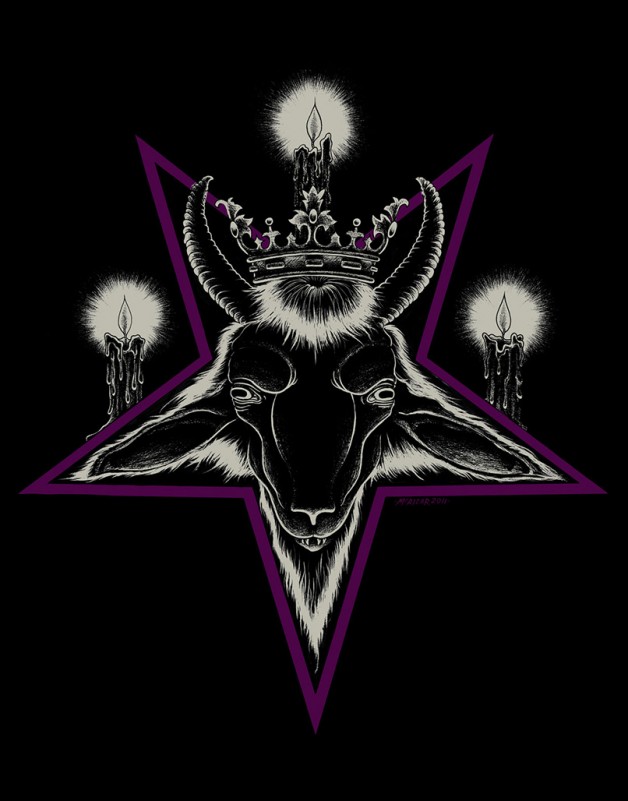
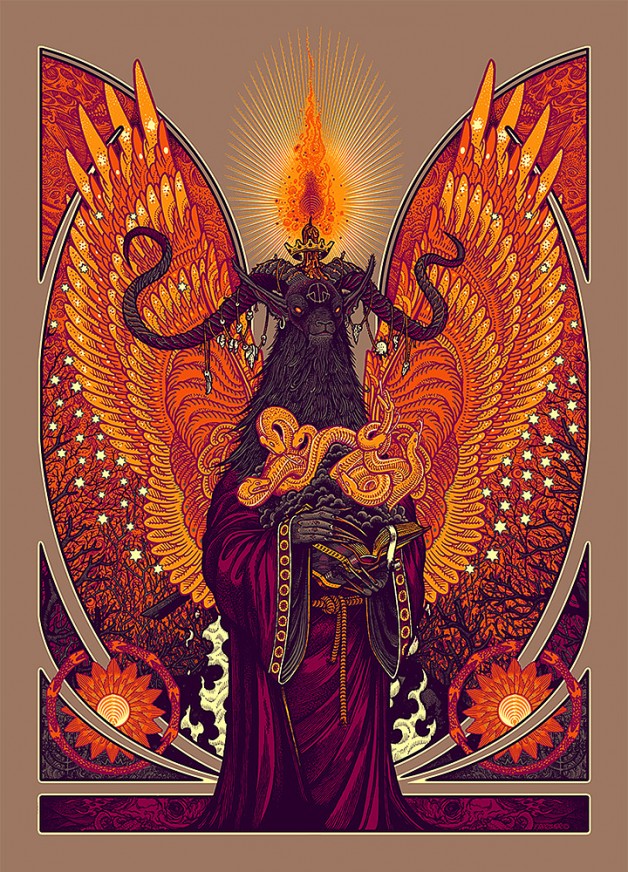
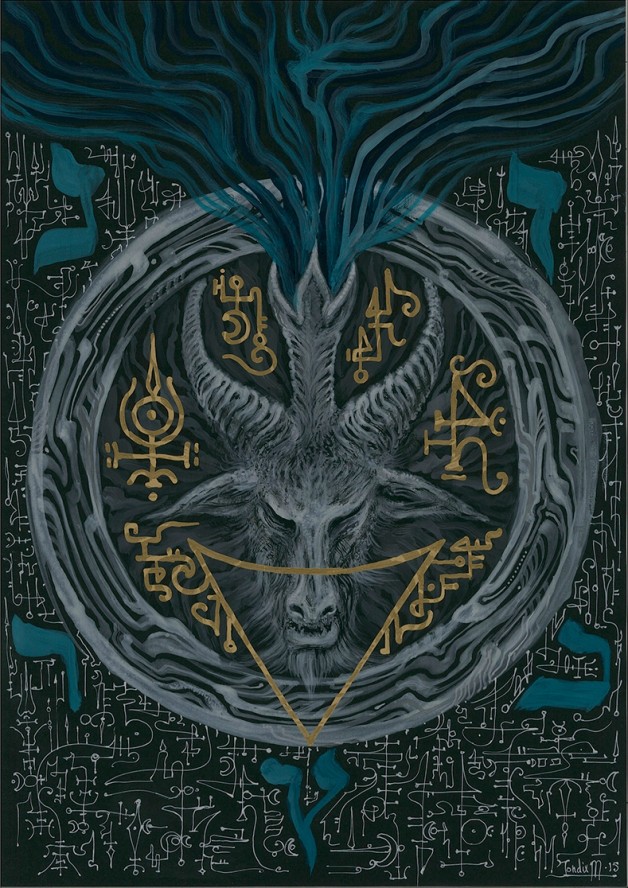
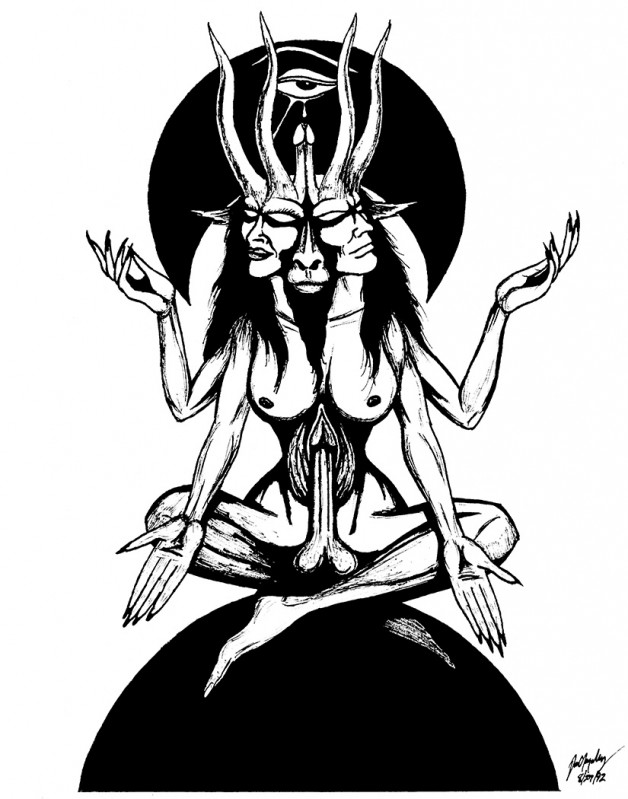
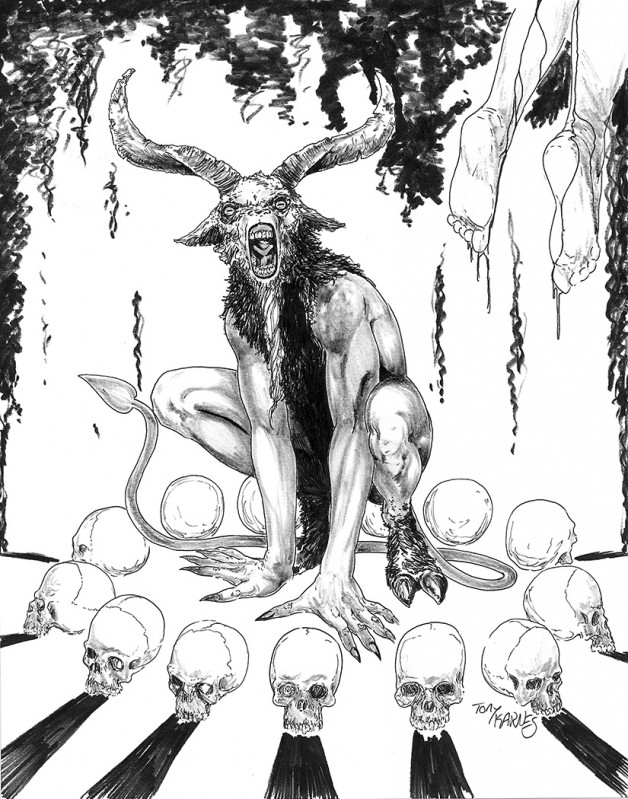
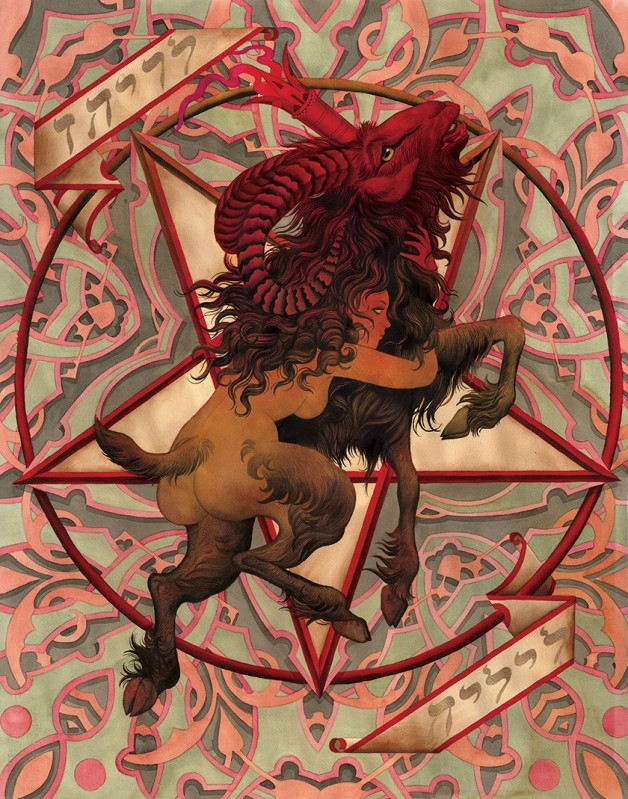
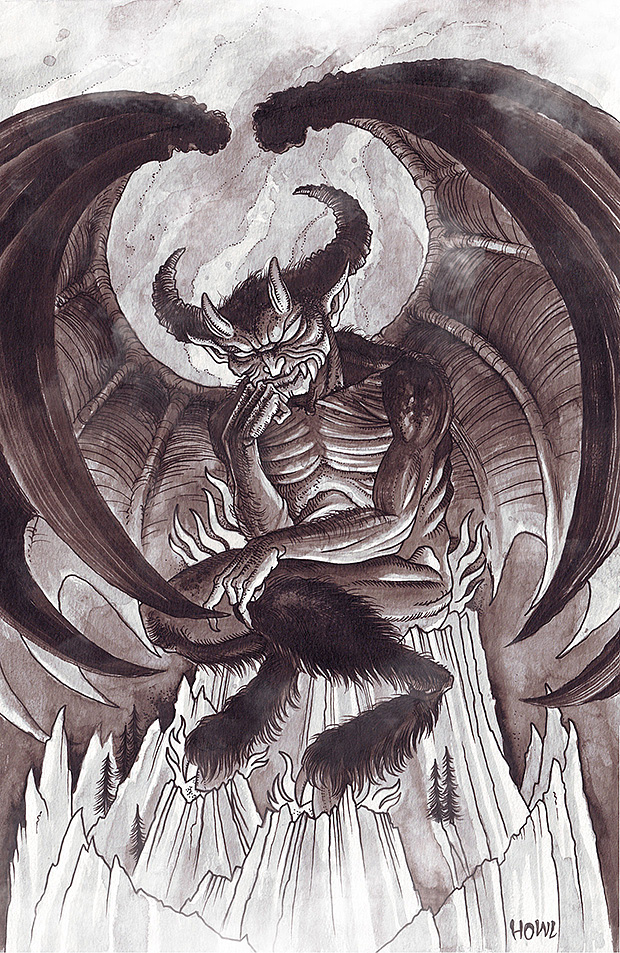
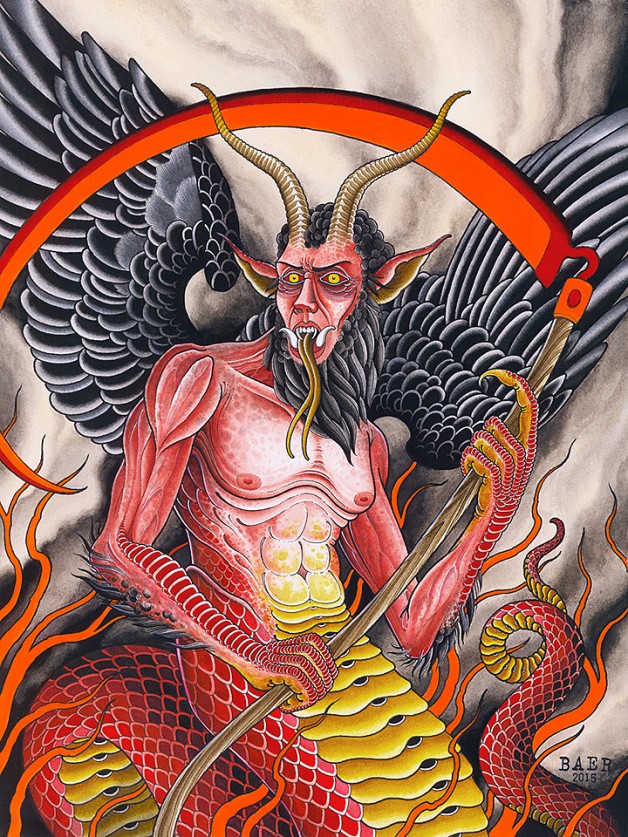
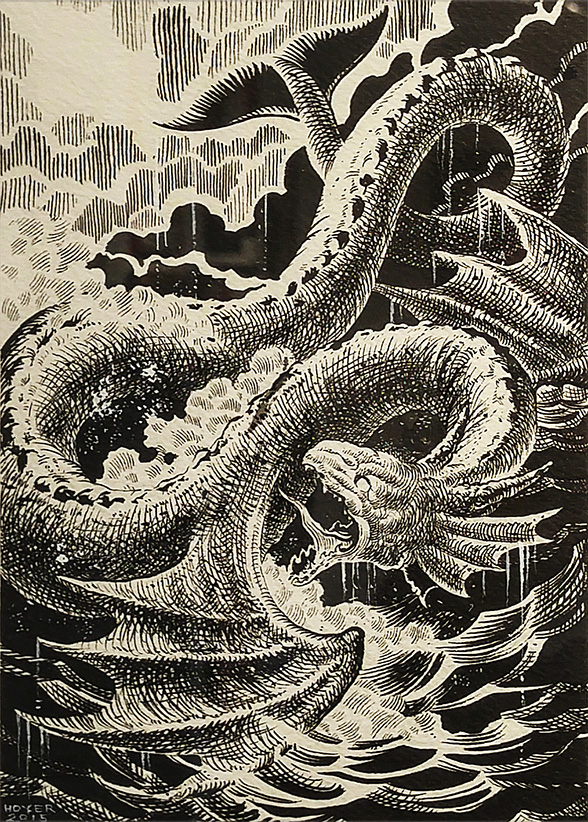
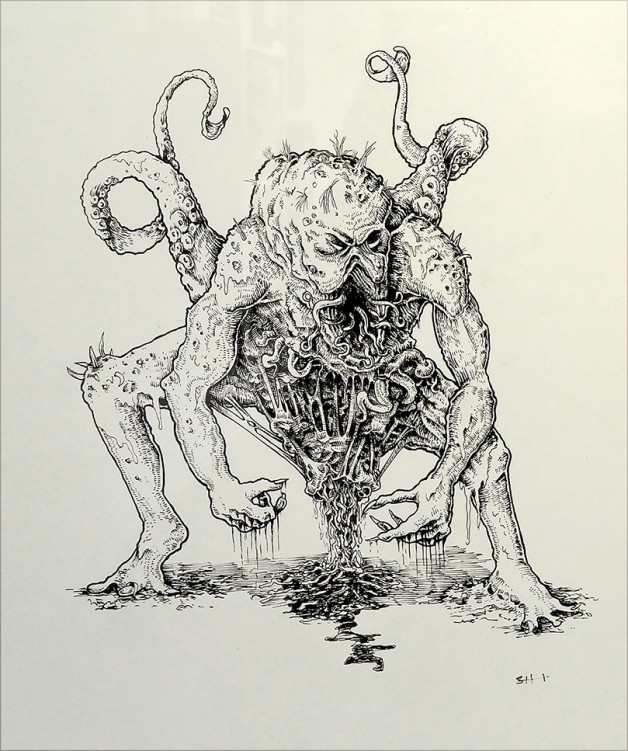
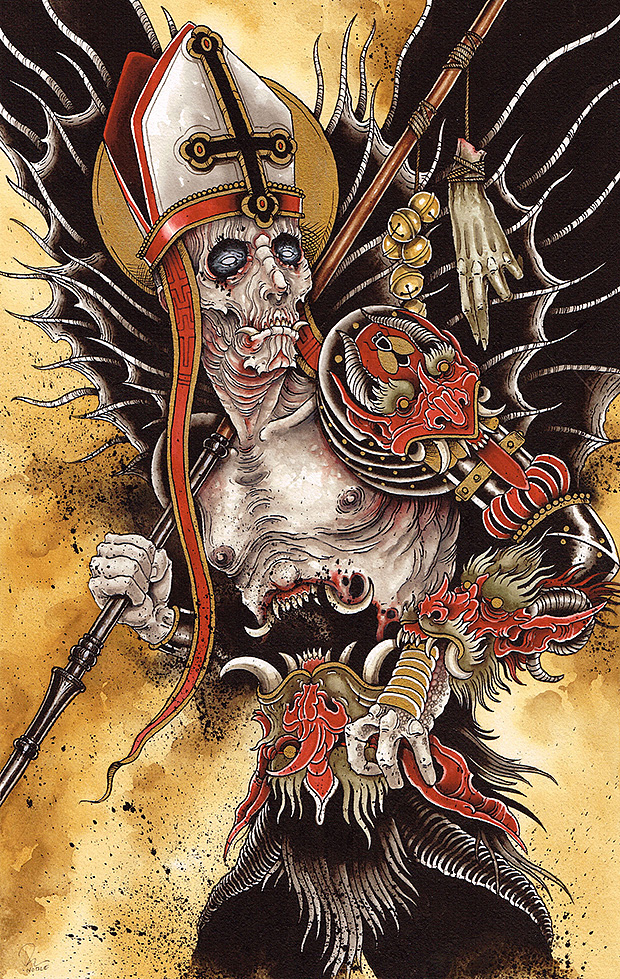
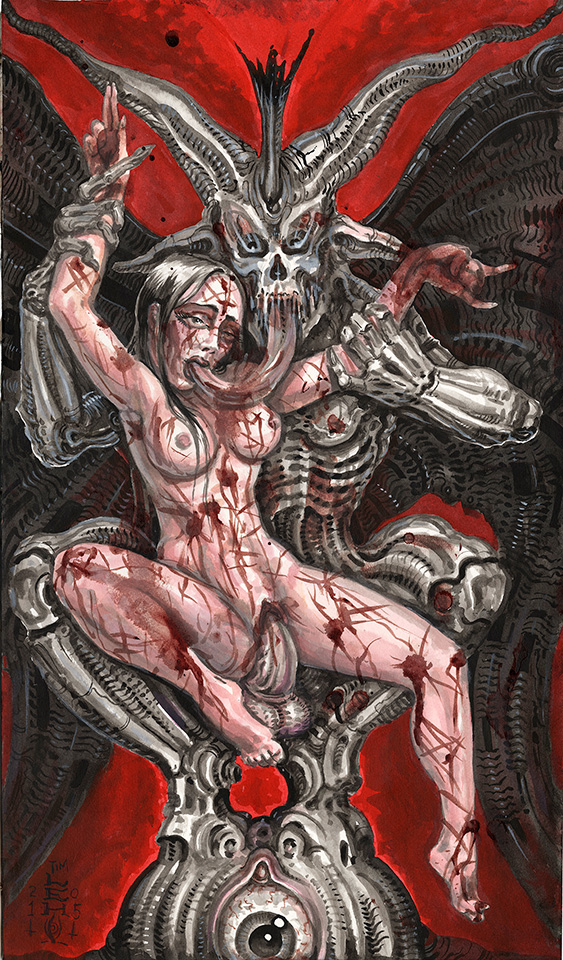
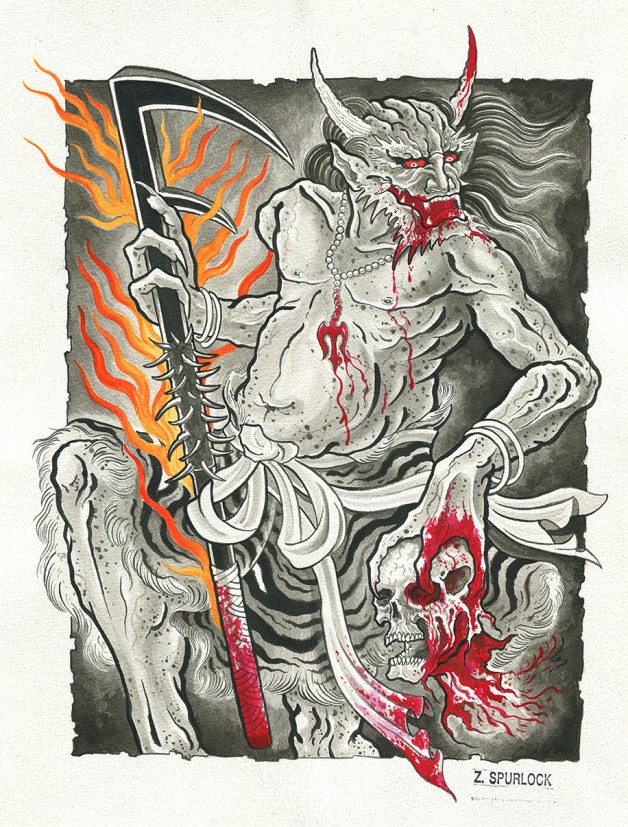
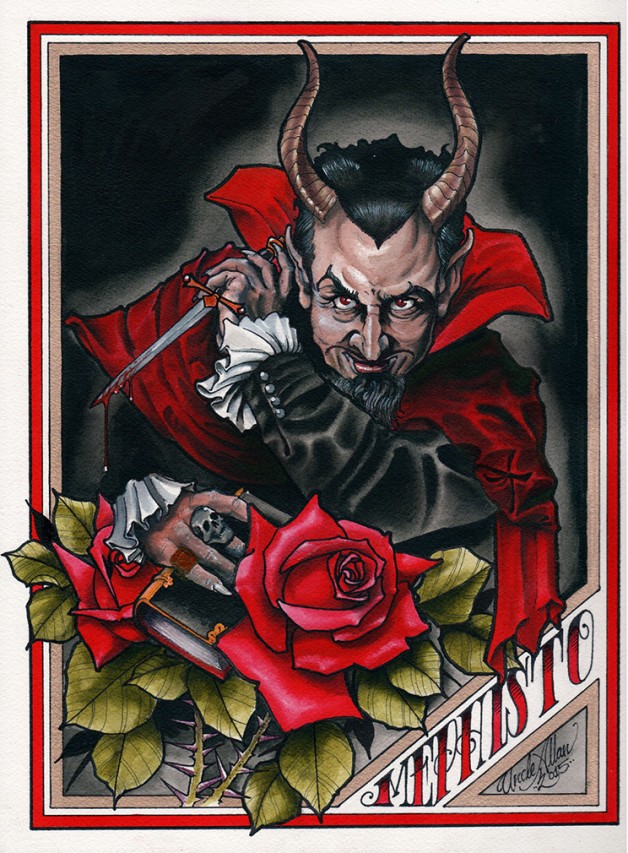
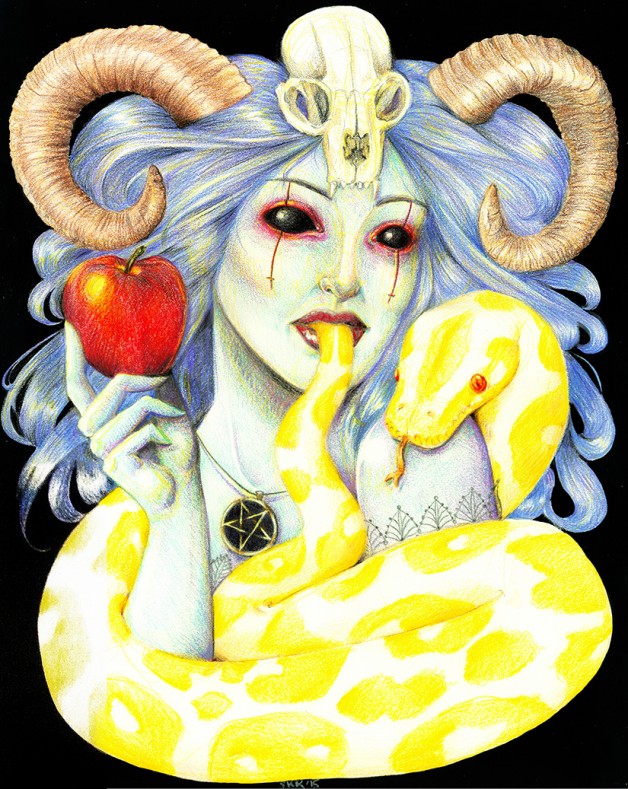
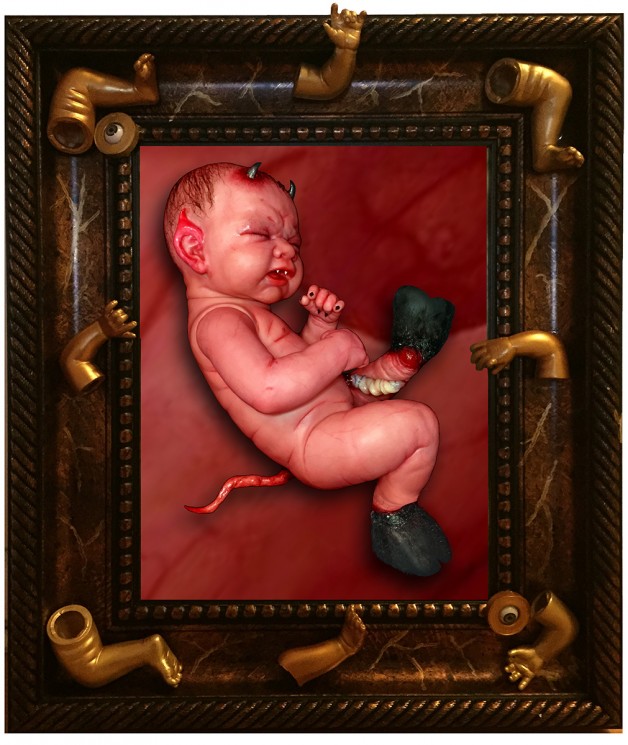
Thanks so much for this awesome review of a very special show for us !!
This is Marilyn Mansfield. That is my legal name. Please remove the misprint of the other name under my piece. Thank you.
Dear Miss Mansfield
Sorry for the typo. So you would like “Marilyn Mansfield” to appear as the credit for the “Demon Seed” painting? We just want to make sure we’ve got your request correct.
Sincerely,
Frater Lux Ad Mundi